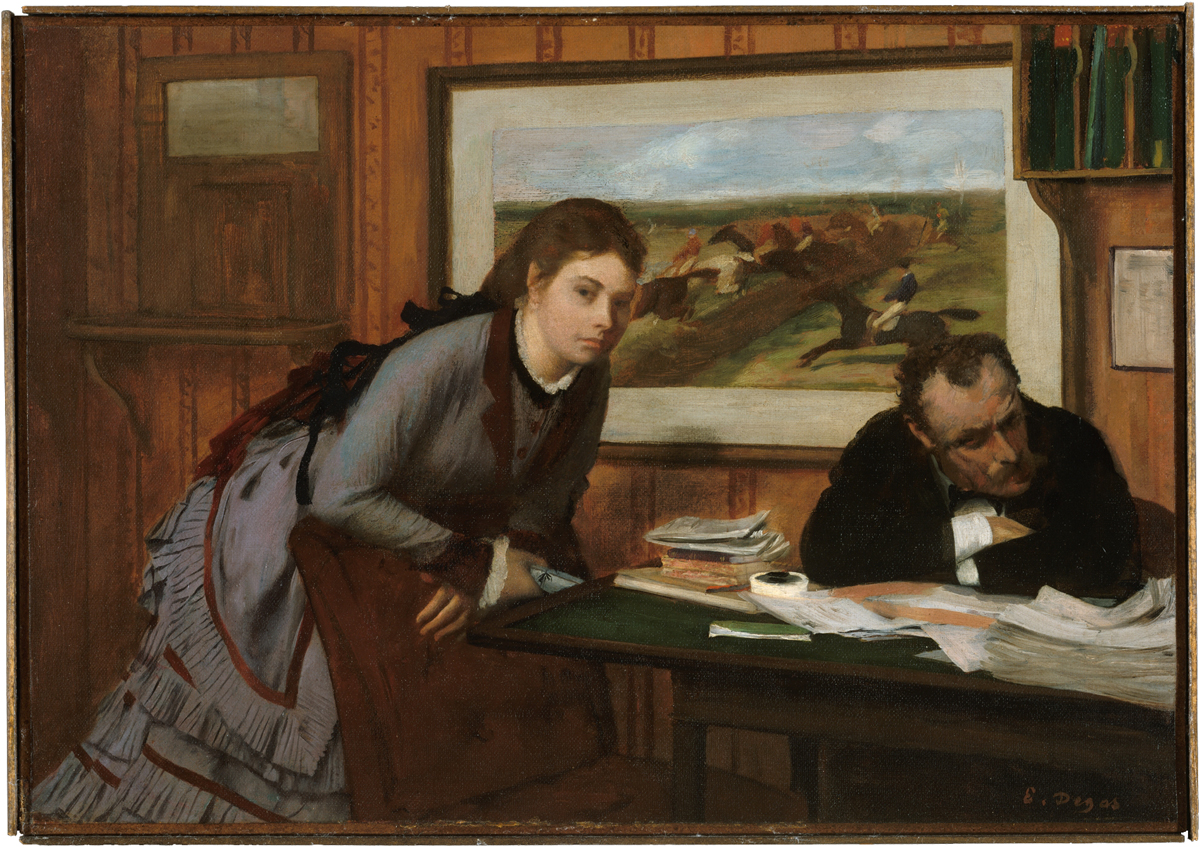| |
| BACK TO THE ARTIST |
| |
| Sulking, c. 1870 |
| |
| |
 |
| |
| |
| |
| Details |
|
|
Description |
| |
|
| Artist |
EDGAR DEGAS |
It has long been assumed that the mysterious title of this work – in French , “Bouderie” – first appeared in a critical article by Georges Lecomte in 1910; for this reason it was regarded with some scepticism as is invention. In fact, it dates back to 27 December 1895, whenDegasstored the painting with Durand-Ruel thus it is quite probable that it was the artist’s title.
Although Sulking was dated 1873-75 by Lemoisne, Theodore Reff, who had made the most through study of the painting believes it to date to 1869-71. Three sketches in a notebook used during his period show details of the half door, the rack filled with ledgers ,and the table piled up with papers. Apart from its provenance, the sketches are the only documentation on this enigmatic work; anything else – placing it , identifying the figures, interpreting the subject – is strictly conjectural.
Two people, a man at work and a woman visiting. Have been interrupted in their discussion which must imagine as heated and strained. The setting is either an office connected with horse racing (suggested be the colour engraving on the wall) or , more likely, a small bank like the one owned be the De Gas family on rue de la Victoire, which the artist might have used for his studies of furniture. Reff recognised the young woman as Emma Dobigny, and the scowling man (though his features are less visible) as the writer Duranty.
Amon Victorian painters ,and also among certain Continental painters such as Tissot and Stevens who were strongly influenced by the Victorians , we find this interest in bourgeois private life, meticulously depicted and often disturbed by the intrusion of a third party. We do not really know what has happened or what is about to happen between the couple (undoubtedly lovers or husband and wife)- perhaps the woman has just asked the “banker” for money. Perhaps the painting is based on some unidentified literary source. However , as usual in his genre scenes,Degasplays mainly on the ambiguity of the situation, stressing the mysterious , complicated relations between men and women, and posing existential questions in an entirely prosaic manner. |
| |
| Date |
ca. 1870 |
| |
| Institution |
The Metropolitan Museum of Art |
| |
|
| Medium |
Oil on canvas |
| |
| Dimensions |
32.4 x 46.4 cm |
| |
| |
| |
| |
| |
| |
| |
| |
| |
| |
| |
| |
| |
| |
|